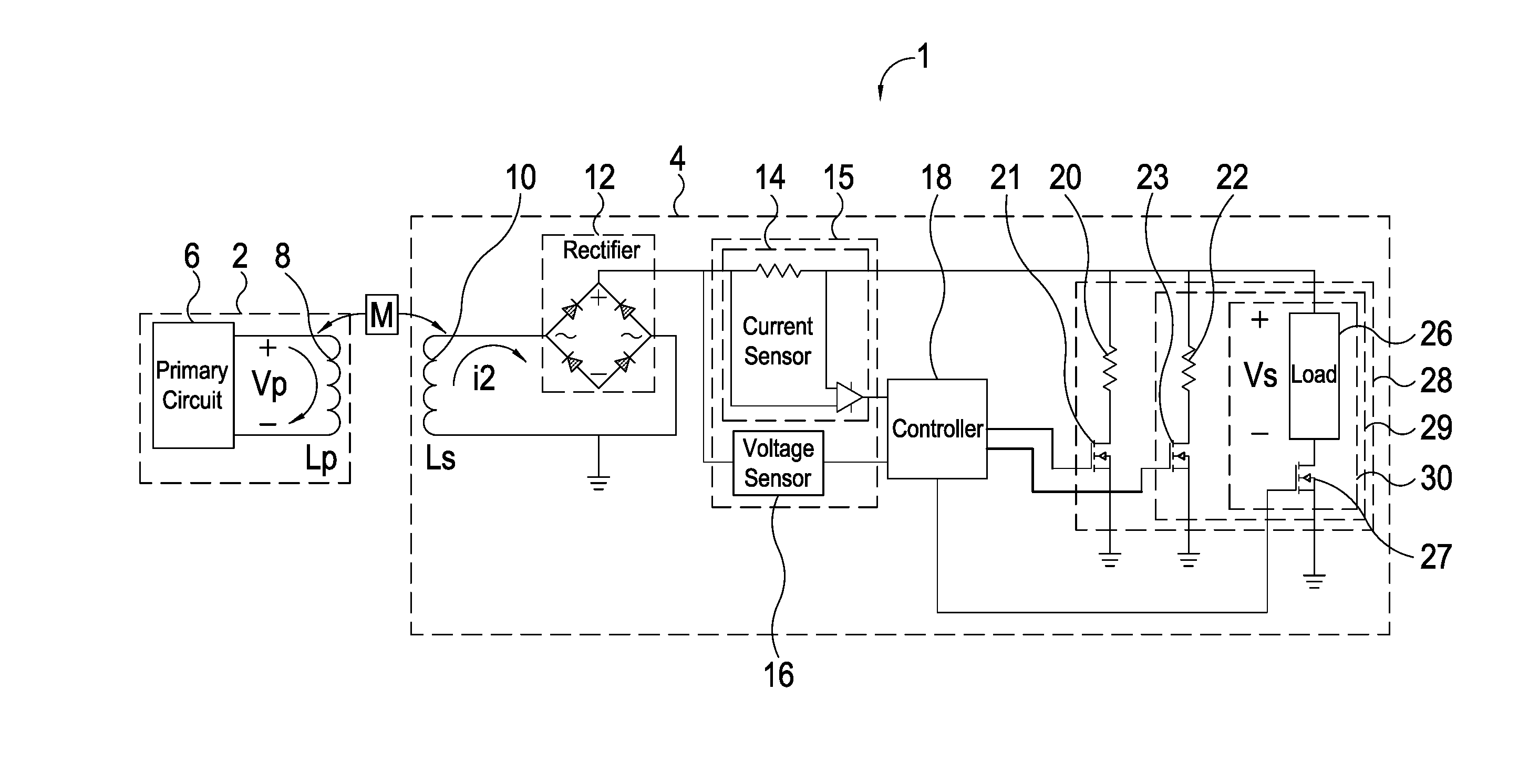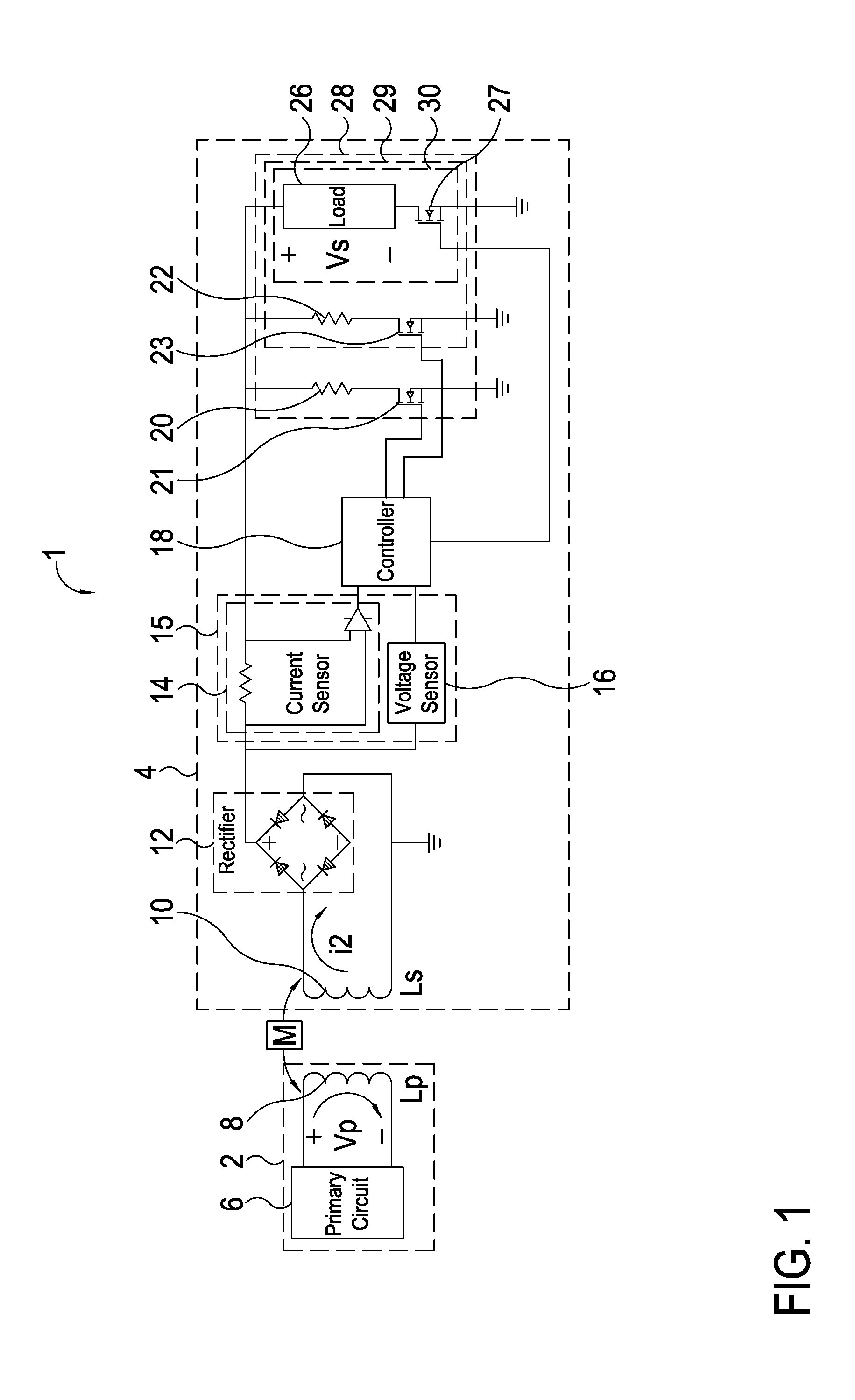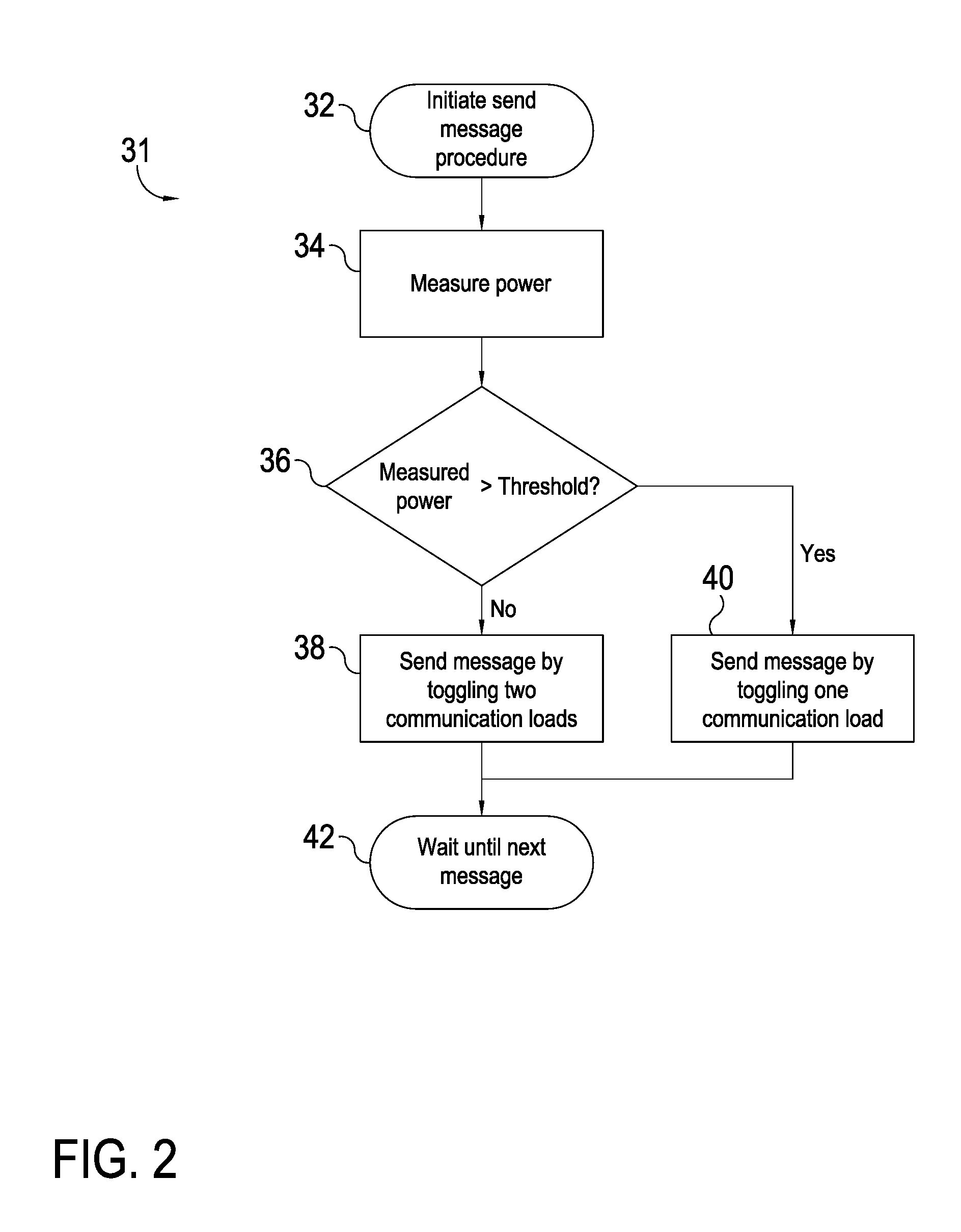Communication across an inductive link with a dynamic load
a dynamic load and inductive link technology, applied in the field of wireless communication, can solve the problems of increasing power loss associated with communication, increasing power loss, and increasing reliability, and achieve the effect of reducing the amount of power lost, consuming more power, and minimizing the size of the load shi
- Summary
- Abstract
- Description
- Claims
- Application Information
AI Technical Summary
Benefits of technology
Problems solved by technology
Method used
Image
Examples
Embodiment Construction
[0014]An inductive power supply system in accordance with one embodiment of the present invention is shown in FIG. 1 and generally designated 1. The inductive power supply system includes an inductive power supply 2 and a remote device 4. The remote device 4 has multiple communication load configurations, at least one being a dynamic communication load configuration. The remote device 4 toggles between the communication load configurations to communicate with the inductive power supply 2. A sensor in the remote device 4 detects the amount of power that the inductive power supply 2 delivers to the remote device 4. A controller 18 in the remote device is capable of configuring the dynamic communication load configuration based on the detected power. The controller in the remote device is also capable of toggling between the different communication load configurations to communicate with the inductive power supply 2.
[0015]The present invention is suitable for use with most inductive po...
PUM
 Login to View More
Login to View More Abstract
Description
Claims
Application Information
 Login to View More
Login to View More - R&D
- Intellectual Property
- Life Sciences
- Materials
- Tech Scout
- Unparalleled Data Quality
- Higher Quality Content
- 60% Fewer Hallucinations
Browse by: Latest US Patents, China's latest patents, Technical Efficacy Thesaurus, Application Domain, Technology Topic, Popular Technical Reports.
© 2025 PatSnap. All rights reserved.Legal|Privacy policy|Modern Slavery Act Transparency Statement|Sitemap|About US| Contact US: help@patsnap.com



